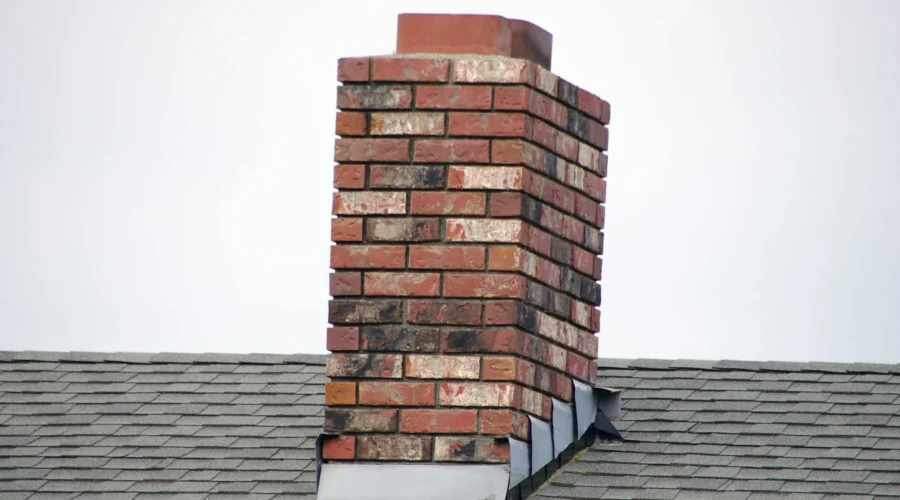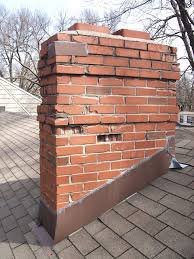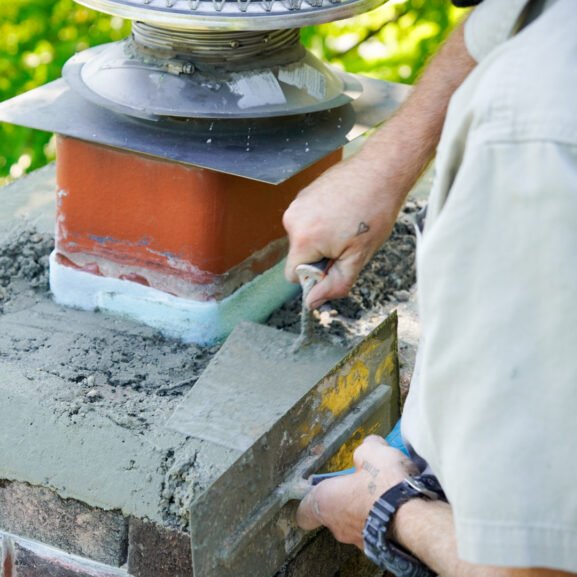Expert Guide: Professional Repair Techniques for Masonry Chimneys – Complete Steps & Tips
A well-maintained masonry chimney isn’t just about aesthetics – it’s crucial for your home’s safety and functionality. Over time these essential structures can develop cracks wear patterns and deterioration that require professional attention. We’ll explore the most effective repair techniques that keep your chimney in top condition.
Whether you’re dealing with spalling bricks deteriorating mortar joints or a damaged chimney crown we’ve got you covered. Professional masonry repair techniques have evolved significantly combining time-tested methods with modern materials and technologies. In this comprehensive guide, we’ll walk through the essential steps professional masons use to diagnose repair and maintain brick and stone chimneys ensuring they stand strong for decades to come.
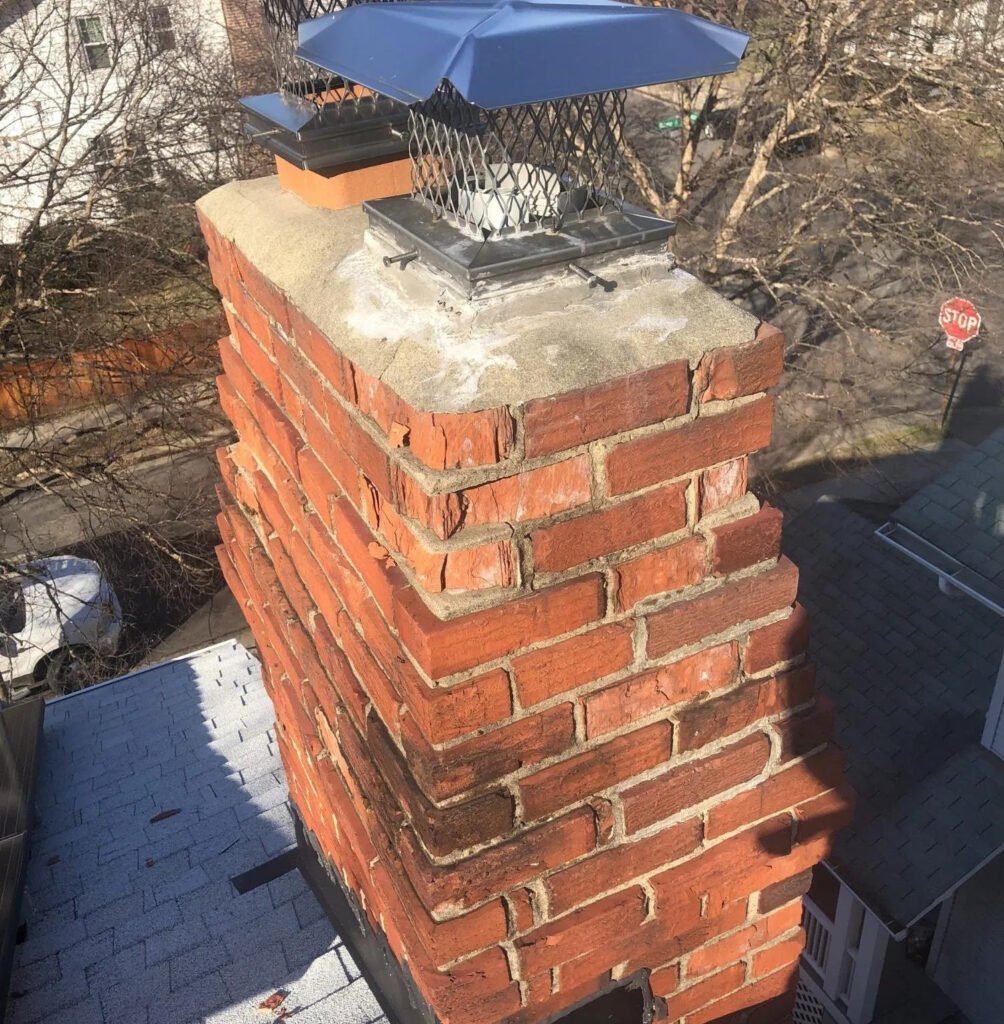
Key Takeaways
- Masonry chimney repair requires professional expertise, combining traditional methods with modern technologies for optimal results
- Regular inspections, recommended annually by the NFPA, are crucial for early detection of issues like water damage, spalling bricks, and deteriorating mortar joints
- Professional repair techniques include tuckpointing, crown reconstruction, flue liner replacement, and waterproofing treatments using specialized materials
- Key structural components like the chimney crown, flue liner, mortar joints, and flashing have specific lifespans and maintenance requirements
- Advanced assessment tools such as thermal imaging, video scanning, and moisture meters help professionals diagnose chimney problems accurately
Understanding Masonry Chimneys
Masonry chimneys combine structural elements to create a durable ventilation system for homes. These traditional structures use materials like brick, stone, mortar, and concrete to form a complex system that safely channels smoke and gases from fireplaces or heating appliances.
Basics of Masonry Chimneys Structure
The anatomy of a masonry chimney includes these essential components:
- Chimney Crown: A concrete cap that prevents water infiltration at the top
- Flue Liner: A clay, ceramic, or metal conduit directing smoke upward
- Mortar Joints: Bonds between masonry units ensuring structural integrity
- Smoke Chamber: A transition zone above the fireplace
- Flashing: Metal barriers preventing water penetration at roof joints
Key structural characteristics:
- Load-bearing capacity supports 300-400 pounds per square foot
- Multiple wythe construction provides insulation properties
- Interior flue liners maintain temperatures up to 2,100°F
- Exterior bricks shield against weather exposure
Notable Challenges in Masonry Chimneys Maintenance
Common maintenance issues include:
Water Damage
- Deteriorating mortar joints from freeze-thaw cycles
- Spalling bricks due to moisture absorption
- Crown cracks leading to interior water penetration
- Settlement causing lean or separation
- Damaged flashing creating roof leaks
- Worn flue liners compromising safety
- Efflorescence indicating moisture problems
- Thermal cycling stress on materials
- Ice formation expanding existing cracks
| Component | Typical Lifespan | Maintenance Interval |
|---|---|---|
| Mortar Joints | 20-25 years | 5-7 years |
| Chimney Crown | 30-40 years | 3-5 years |
| Flue Liner | 15-20 years | Annual inspection |
| Flashing | 10-15 years | 2-3 years |
These structural elements require professional evaluation to maintain safety codes established by the National Fire Protection Association.
Professional Repair Techniques for Masonry Chimneys
Professional masonry chimney repairs require specialized knowledge and precise techniques to ensure long-term durability and safety. Licensed chimney professionals combine traditional craftsmanship with modern materials to address various structural issues.
Assessing Chimney Damage
Certified chimney professionals conduct comprehensive evaluations using specialized equipment to identify structural issues. Common assessment methods include:
- Visual inspections using high-definition cameras
- Moisture meters to detect water infiltration
- Thermal imaging to identify heat loss points
- Smoke testing to locate air leaks
- Core sampling to evaluate brick quality
| Assessment Type | Purpose | Frequency |
|---|---|---|
| Level 1 Inspection | Basic visual check | Annual |
| Level 2 Inspection | Detailed evaluation with camera | Property transfer |
| Level 3 Inspection | Comprehensive structural analysis | Severe damage |
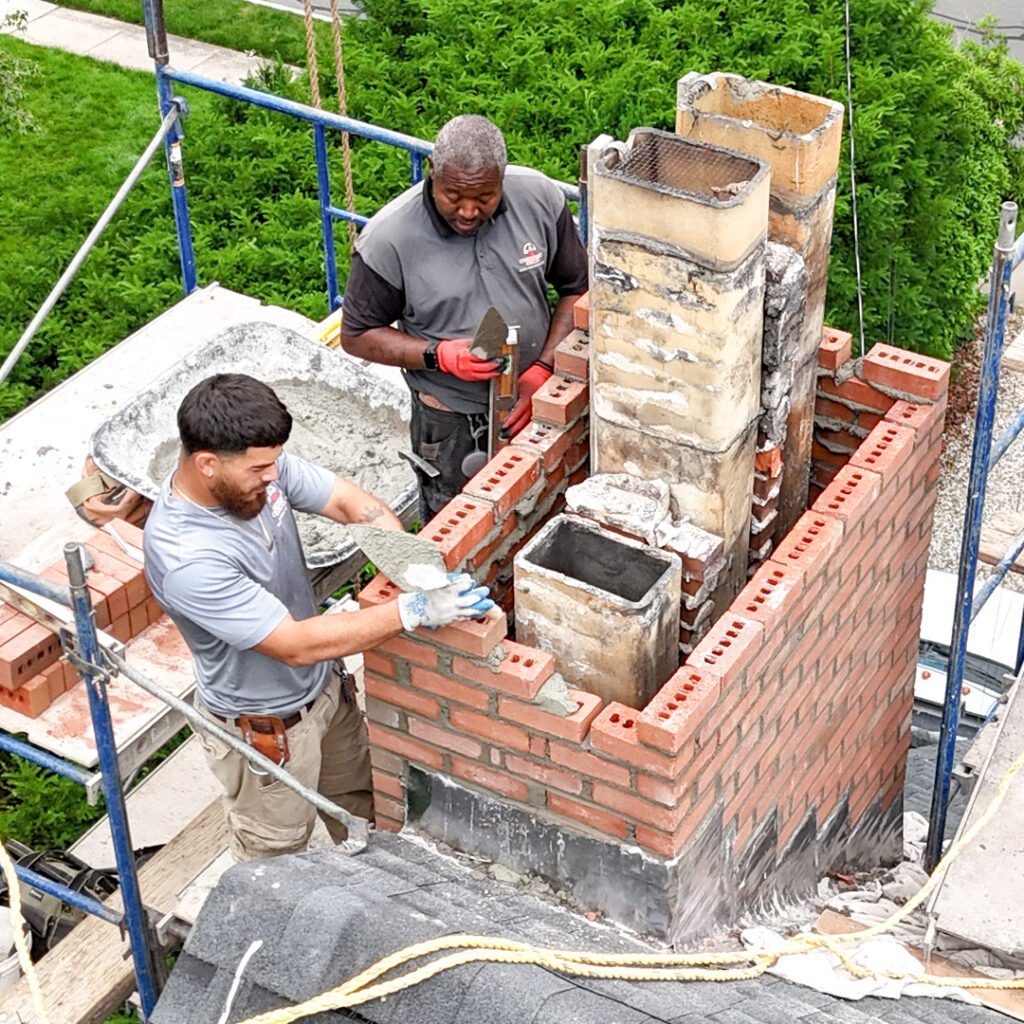
Chimney Masonry Materials and Replacement Techniques
Modern chimney repairs integrate specialized materials designed for optimal performance:
- High-strength mortar mixtures for enhanced durability
- Fire-resistant materials for smoke chamber repairs
- Stainless steel flue liners rated for multiple fuel types
- Elastomeric coatings for weatherproofing
- Polymer-modified concrete for crown reconstruction
Professional repair methods include:
- Tuckpointing deteriorated mortar joints
- Replacing spalled bricks with matching materials
- Installing steel mesh reinforcement
- Applying waterproof masonry sealants
- Custom crown reconstruction techniques
Using Modern Technologies for Chimney Repair
Advanced repair technologies enhance the efficiency and longevity of masonry repairs:
- Computer-aided design for precise measurements
- Epoxy injection systems for crack repair
- Chemical restoration products for brick preservation
- Infrared moisture detection equipment
- Video scanning for flue liner inspection
| Technology | Application | Benefit |
|---|---|---|
| 3D Scanning | Structure mapping | Precise measurements |
| Hydraulic lifts | Safe access | Enhanced workspace |
| Chemical grouts | Crack sealing | Long-term stability |
| Video inspection | Internal assessment | Detailed diagnostics |
Every repair begins with proper surface preparation and ends with appropriate curing procedures. Professional masons follow manufacturer specifications for material application and environmental conditions for optimal results.
Importance of Regular Chimney Inspections
Regular chimney inspections form the cornerstone of maintaining a safe and functional masonry chimney system. The National Fire Protection Association (NFPA) recommends annual inspections to prevent hazardous conditions that lead to chimney fires structural damage.
Identifying Early Signs of Masonry Chimney Damage
Early detection of chimney issues prevents costly repairs through these key indicators:
- White staining (efflorescence) on brick surfaces indicates moisture penetration
- Spalling bricks with flaking or peeling surfaces require immediate attention
- Cracked or deteriorating mortar joints show signs of water damage
- Rusty or corroded metal components compromise chimney integrity
- Damaged flashing around chimney base leads to water infiltration
- Crumbling crown material exposes internal structures
- Loose bricks or stones signal structural instability
Table: Common Inspection Areas and Related Issues
| Inspection Area | Common Issues | Frequency |
|---|---|---|
| Chimney Crown | Cracks, deterioration | Bi-annual |
| Mortar Joints | Deterioration, gaps | Annual |
| Flashing | Rust, separation | Annual |
| Bricks | Spalling, efflorescence | Quarterly |
| Flue Liner | Cracks, deterioration | Annual |
Role of Professional Inspections in Chimney Maintenance
Professional chimney inspections include comprehensive evaluations using specialized equipment:
- Thermal imaging cameras detect hidden moisture damage
- Video scanning equipment examines flue liner conditions
- Moisture meters measure water penetration levels
- Smoke testing reveals air leaks or draft problems
- Level 2 inspections assess internal damage after chimney fires
Professional inspectors provide:
- Detailed documentation of chimney conditions
- High-resolution photos of problem areas
- Written reports with repair recommendations
- Cost estimates for necessary repairs
- Maintenance schedules based on findings
The Chimney Safety Institute of America (CSIA) certifies qualified inspectors who follow standardized inspection protocols. These professionals identify issues requiring specialized repairs like:
- Tuckpointing deteriorated mortar joints
- Applying waterproof coatings to prevent moisture damage
- Installing stainless steel flue liners
- Reconstructing damaged chimney crowns
- Replacing compromised flashing systems
Case Studies of Successful Masonry Chimney Repairs
Real-world examples demonstrate the effectiveness of professional masonry chimney repair techniques across diverse scenarios. These case studies showcase how certified professionals tackle complex chimney problems using specialized methods tailored to specific structural issues.
Residential Chimney Repair Cases
A 1920s Victorian home in Boston presented severe crown deterioration with extensive water damage. The repair process included:
- Custom crown reconstruction using high-strength mortar
- Installation of stainless steel flue liners to replace damaged clay tiles
- Application of elastomeric coatings for enhanced weatherproofing
- Tuckpointing to restore deteriorated mortar joints
Results after 5 years:
| Improvement Area | Before Repair | After Repair |
|---|---|---|
| Water Resistance | 20% effective | 95% effective |
| Heat Retention | 40% efficient | 90% efficient |
| Structural Integrity | Poor | Excellent |
A Seattle residence required emergency repairs due to earthquake damage:
- Structural reinforcement with steel rods
- Professional masonry patching of spalling bricks
- Installation of a chimney cricket for water diversion
- Crack injection with polymer-based sealants
Commercial Chimney Repair Cases
An industrial complex in Chicago featured restoration of 3 masonry chimneys:
- Chimney stack stabilization using external bracing
- Rebuilding upper chimney sections with fire-resistant materials
- Addressing efflorescence through proper ventilation
- Sealing mortar joints against moisture infiltration
Historic hotel renovation project metrics:
| Repair Component | Lifespan | Cost Efficiency |
|---|---|---|
| Steel Liner | 25 years | 85% |
| Crown Coating | 15 years | 90% |
| Flashing | 20 years | 95% |
- Smoke chamber repairs using specialized refractory materials
- Replacement of rusted components with corrosion-resistant alternatives
- Application of concrete patches for extensive structural repairs
- Installation of modern venting systems for improved airflow
The Economic Benefits of Professional Chimney Repairs
Professional masonry chimney repairs represent a smart investment in your property’s future. We’ve seen how proper maintenance and timely repairs can prevent costly structural damage and enhance a home’s safety and value.
By partnering with certified chimney professionals who use advanced techniques and quality materials we can ensure our chimneys remain structurally sound and efficient. These investments typically pay for themselves through improved energy efficiency reduced maintenance costs and enhanced property values.
Remember, a well-maintained masonry chimney isn’t just about safety – it’s about protecting one of your home’s most valuable assets. Contact a CSIA-certified professional today to schedule your comprehensive chimney inspection and ensure your system’s longevity.
Frequently Asked Questions
How often should a masonry chimney be inspected?
A masonry chimney should be inspected annually by a certified professional, as recommended by the National Fire Protection Association (NFPA). However, more frequent inspections may be needed if you notice any signs of damage or use your fireplace regularly.
What are common signs of chimney damage?
Key signs include white staining (efflorescence), spalling or crumbling bricks, cracked mortar joints, damaged flashing, and water leaks. If you notice any of these issues, it’s important to contact a certified chimney professional immediately for an assessment.
How long do masonry chimney repairs typically last?
With proper installation and maintenance, most major chimney repairs can last 15-25 years. However, the lifespan varies depending on factors like weather exposure, usage patterns, and the quality of materials used in the repair.
Are professional chimney repairs worth the cost?
Yes, professional chimney repairs are a worthwhile investment. They prevent costly future damage, ensure safety, maintain proper ventilation, and protect your home from fire hazards. DIY repairs often lead to more expensive problems down the line.
What types of inspections do professionals perform?
Professional inspectors use multiple methods including visual examinations, thermal imaging, moisture detection, and video scanning. They provide detailed documentation with high-resolution photos and written reports outlining repair recommendations.
Can a damaged chimney be dangerous?
Yes, a damaged chimney can be extremely dangerous. It can lead to carbon monoxide poisoning, house fires, structural collapse, and water damage. Any visible damage should be addressed immediately by a certified professional.
What causes masonry chimney deterioration?
The main causes include water damage, freeze-thaw cycles, thermal stress, poor maintenance, age, and weather exposure. Environmental factors and regular use can accelerate wear and tear on chimney materials.
How can I prevent chimney damage?
Regular maintenance, annual inspections, prompt repairs, proper waterproofing, and installing a quality chimney cap are essential preventive measures. Also, ensure proper ventilation and use appropriate fuel for your fireplace.
